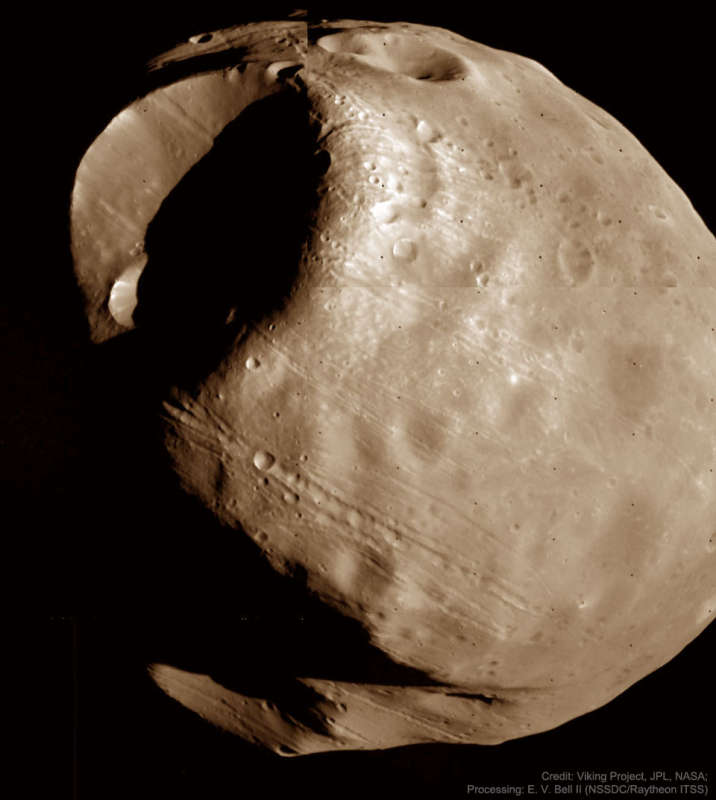Credit & Copyright: Viking Project,
JPL,
NASA;
Mosaic Processing: Edwin V. Bell II
(NSSDC/Raytheon ITSS)
Explanation:
This moon is doomed.
Mars,
the red planet named for the
Roman god of war, has two tiny moons,
Phobos and
Deimos, whose
names are derived from the Greek for Fear and
Panic.
The origin of the Martian moons is unknown, though, with a leading
hypothesis holding that they are captured
asteroids.
The larger moon, at 25-kilometers across, is Phobos,
and is indeed seen to be a cratered, asteroid-like object in this
false-colored image mosaic taken by the robotic
Viking 1 mission in 1978.
A recent analysis of the unusual long grooves seen on
Phobos indicates that they may result from
boulders rolling away from the giant impact that created the crater on the upper
left:
Stickney Crater.
Phobos
orbits so close to Mars - about 5,800 kilometers above the surface compared to 400,000
kilometers
for our Moon - that gravitational
tidal forces
are dragging it down.
The ultimate result will be for
Phobos to break up in orbit and then crash down
onto the Martian surface in about 50 million years.
Well before that -- tomorrow, in fact, if everything
goes according to plan -- NASA's robotic
InSight lander will touch down on Mars
and begin investigating its internal structure.
Latest:
Insight to Land on Mars Tomorrow
1999 2000 2001 2002 2003 2004 2005 2006 2007 2008 2009 2010 2011 2012 2013 2014 2015 2016 2017 2018 2019 2020 2021 2022 2023 2024 2025 |
Январь Февраль Март Апрель Май Июнь Июль Август Сентябрь Октябрь Ноябрь Декабрь |
NASA Web Site Statements, Warnings, and Disclaimers
NASA Official: Jay Norris. Specific rights apply.
A service of: LHEA at NASA / GSFC
& Michigan Tech. U.
|
Публикации с ключевыми словами:
Phobos - Mars - Фобос
Публикации со словами: Phobos - Mars - Фобос | |
См. также:
Все публикации на ту же тему >> | |
